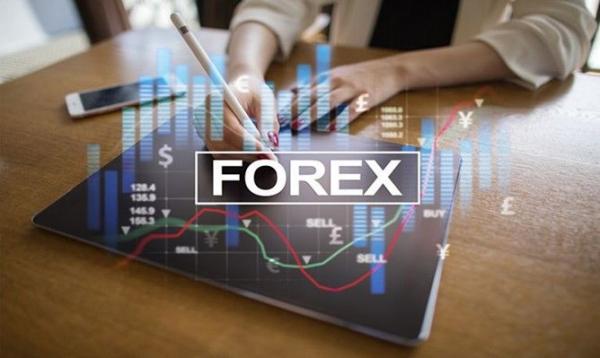
Many traders enter the market excited about the prospect of multiplying their gains but underestimate the dangers of excessive leverage, So, what’s the secret to forex trading with leverage successfully?
Forex trading offers the potential for significant profits, but it also comes with risks—especially when leverage is involved.
In this guide, we’ll explore how to use leverage wisely to maximize gains while minimizing losses.

Understanding Forex Trading with Leverage
Leverage in forex trading allows traders to control larger positions with a relatively small amount of capital. It is expressed as a ratio, such as 10:1, 50:1, or even 100:1, meaning that for every $1 of your own money, you can trade with $10, $50, or $100, respectively.
How Does Leverage Work?
For example, if you have $1,000 in your account and your broker offers 50:1 leverage, you can trade positions worth up to $50,000. This can amplify your profits—but it can also magnify your losses just as quickly.
The Pros and Cons of Leverage
✅ Advantages:
- Higher profit potential – You can make larger gains with a smaller initial investment.
- Increased market access – You can trade higher-value positions without needing large capital.
- More trading opportunities – With leverage, you can diversify your trades across multiple currency pairs.
❌ Disadvantages:
- Greater risk of losses – Just as profits can be multiplied, so can losses.
- Margin calls – If the market moves against you, your broker may require additional funds to keep the position open.
- Emotional stress – Highly leveraged trades can lead to significant fluctuations in account balance, increasing emotional pressure.
How to Use Leverage Wisely in Forex Trading
Many traders fail in forex trading because they misuse leverage. Below are key strategies to help you trade smarter with leverage:
1. Choose the Right Leverage Ratio
Not all leverage is created equal. Beginners should start with lower leverage (e.g., 5:1 or 10:1) before moving to higher levels.
- Low leverage (5:1 – 10:1): Ideal for beginners focusing on risk management.
- Moderate leverage (20:1 – 50:1): Suitable for experienced traders with a strong risk management strategy.
- High leverage (100:1 and above): Best for professionals who understand market dynamics and can handle high volatility.
2. Implement Strong Risk Management
Leverage amplifies both profits and losses, making risk management crucial. Here’s how you can protect your capital:
- Set Stop-Loss Orders – This prevents excessive losses by automatically closing trades at a predetermined level.
- Use the 1-2% Rule – Never risk more than 1-2% of your account on a single trade.
- Monitor Margin Levels – Keep an eye on your margin to avoid unexpected margin calls.
3. Trade Highly Liquid Currency Pairs
Highly liquid pairs such as EUR/USD, GBP/USD, and USD/JPY tend to have lower spreads and more predictable price movements, reducing the risk associated with high leverage.
4. Focus on Quality Over Quantity
Instead of opening multiple high-leverage trades, focus on executing well-planned trades based on solid technical and fundamental analysis.
5. Use Demo Accounts Before Trading with Real Money
If you’re new to forex trading with leverage, practice with a demo account first. This allows you to test strategies in real market conditions without risking actual money.
Common Mistakes Traders Make with Leverage
Many traders misuse leverage, leading to account blowouts. Here are some common mistakes to avoid:
1. Overleveraging
Using excessive leverage can wipe out your account in just a few bad trades. Stick to a leverage level that aligns with your risk tolerance.
2. Ignoring Risk Management
A well-placed stop-loss order can be the difference between a manageable loss and a devastating one. Always use risk control measures.
3. Trading Without a Plan
Impulse trading with leverage is a recipe for disaster. Have a clear strategy, set profit targets, and stick to your plan.
4. Not Understanding Margin Requirements
Every broker has margin requirements. If you don’t maintain enough funds in your account, your broker may close your positions unexpectedly.
The Future of Forex Trading with Leverage in 2025
With advancing technology, forex trading is evolving. Here’s what to expect in 2025:
1. Stricter Leverage Regulations
Regulators worldwide are placing limits on leverage to protect traders from excessive risk. Some regions may reduce the maximum leverage available to retail traders.
2. Increased Use of AI
AI-driven trading systems are helping traders manage leverage more effectively.
3. Better Risk Management Tools
Brokers are offering improved tools to help traders manage leveraged positions, such as negative balance protection and AI-powered stop-loss systems.
Final Thoughts: Is Forex Trading with Leverage Right for You?
Forex trading with leverage offers exciting profit potential but comes with risks. The key to success is using leverage wisely, applying strong risk management, and continually learning from market trends.
Quick Recap: ✅ Start with low leverage and increase gradually.
✅ Use stop-loss orders and never risk more than 1-2% per trade.
✅ Choose liquid currency pairs for smoother price movements.
✅ Avoid overleveraging and always trade with a plan.
By mastering leverage, you can maximize your wins while minimizing your losses, setting yourself up for long-term success in the forex market.
Happy trading!






0 Comments